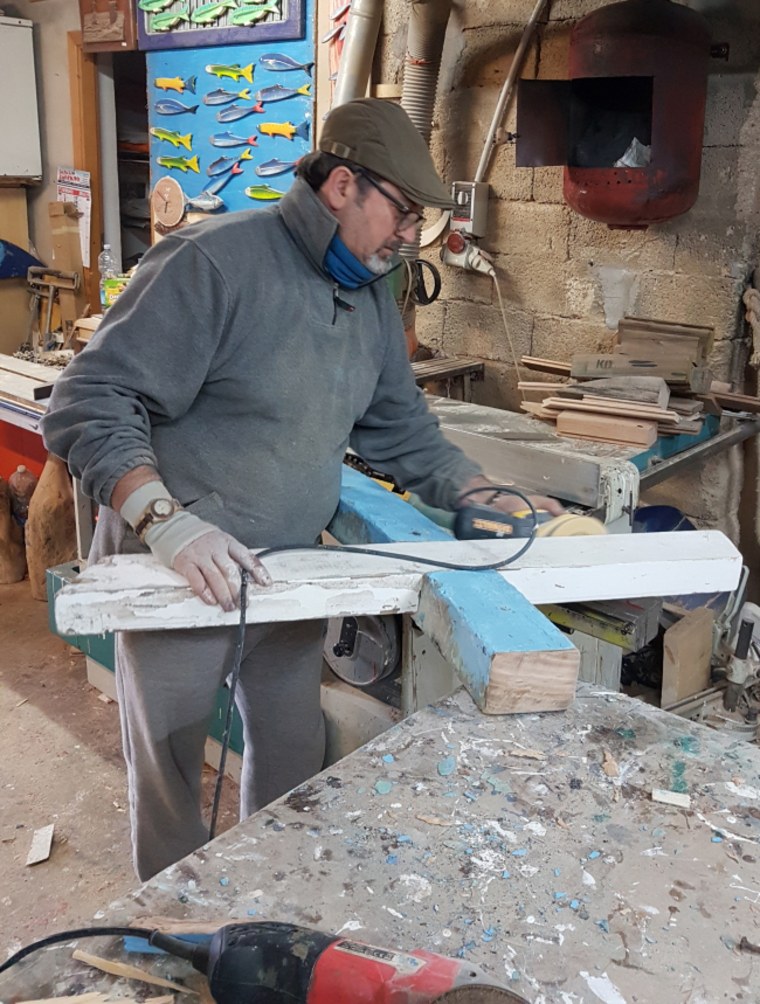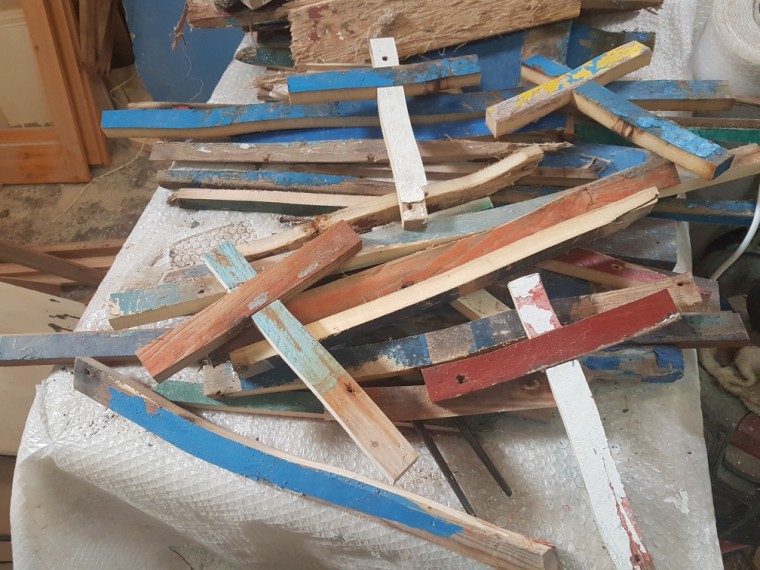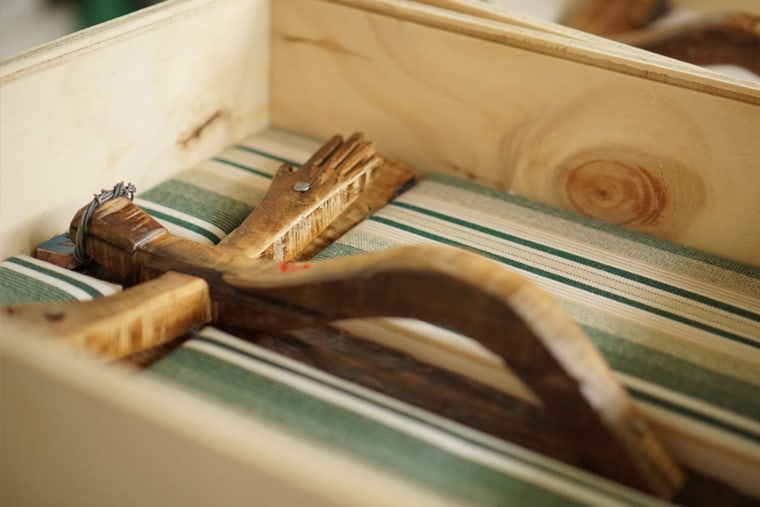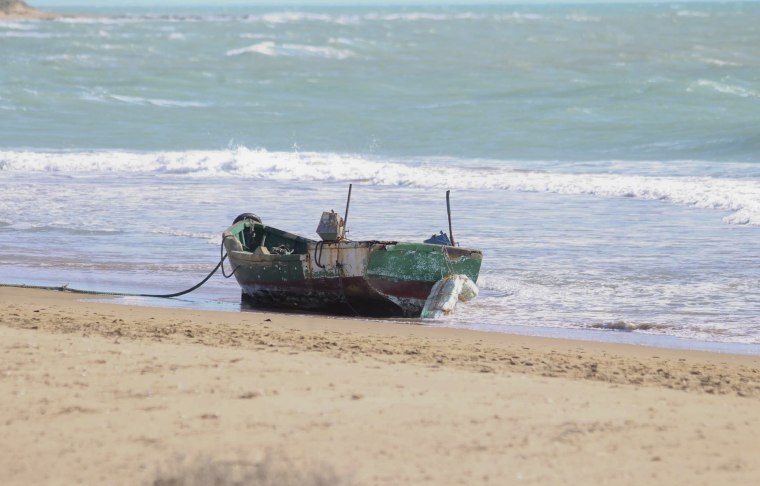LAMPEDUSA, Italy — Francesco Tuccio, a carpenter on this island of less than 8 square miles halfway between Sicily and Tunisia, remembers the day in April of 2009 when his life took on a new purpose.
Shipwrecks and migrant landings on the coast had already become a daily routine on Lampedusa, which is located in the Mediterranean Sea. That morning, Tuccio decided to close his shop and joined a few dozen volunteers working to recover the bodies of drowned migrants who had washed ashore.
“I remember two boats attempted to enter the port that day: One made it, the other sank. More than 100 people, mostly from Somalia and Eritrea, lost their lives,” Tuccio said, his voice breaking with emotion. “What struck me the most was returning home and hearing no news reports even just mentioning the tragedy.”
Over the past several years, Lampedusa, with a population of 6,500, has earned the nickname of “door to Europe” as it has become both a major human smugglers’ hub and Italy’s first port for migrants rescued at sea. According to the International Organization for Migration (IOM), more than 2,000 people died while attempting to cross the Mediterranean Sea in 2018.

Tuccio’s experience that day prompted him to think of ways he could help bring attention to the human tragedy affecting his native island. While taking a walk on a local beach that afternoon, he noted two colorful pieces of wood, positioned in a strange way, recalling the shape of a cross. He quickly realized those were lose pieces of a forgotten migrant dinghy.
Tuccio ended up using wood recovered from wrecked boats like that one to create a series of crucifixes — symbols of the ongoing and increasingly overlooked migrant crisis affecting Europe, the Middle East and Africa. The crosses are now displayed in parishes and homes across the globe, with one even on exhibit at the British Museum in London.
“The idea came as a flash. I decided to put my carpentry skills to good use and build a cross that would be a daily reminder of the shipwrecks. The local priest liked the idea so much that he proposed to use my first prototype for the Easter procession that took place that same month,” Tuccio said.
“As a practicing Catholic, I associate the cross with resurrection, a metaphor about migrants landing safely and beginning a new life in Europe. The wood I use represents death and tragedy but also hope, rebirth and Christian salvation,” he added.
Now, nearly 10 years later, Tuccio still goes out every morning to collect driftwood, which he then carves, smooths, and transforms into crosses in his workshop. The layers of damaged paint remain on the wood as a reminder of the materials’ tragic source.
International impact
Today, one of Tuccio’s crucifixes can be found on the altar inside the chapel of the Anglican Centre in Rome.
Rev. Justin Lewis-Anthony, deputy director of the center, displays the artwork because he believes it “helps us to be faithful to the Lord, who gave his life on the cross for all, for those [safe in Europe], and for those in the little boats,” he told NBC News.

In 2015, the British Museum acquired one of Tuccio’s crosses to exhibit as a symbol of the refugee crisis and Lampedusa’s role in helping migrants.
“Ten years ago we didn’t have the same help we have now. It was just us, a tiny island, faced with bigger human challenges than we could bear,” Tuccio said. “Then reporting on migrants became a trend, and we were finally able to tell our story, too.”
Pope Francis visited Lampedusa in July 2013 to show support for the victims of the Mediterranean route and the island’s residents — just three months before 368 people drowned in one of the deadliest accidents of the refugee crisis. The pope celebrated a public mass, during which Tuccio presented him with one of his handmade crosses.
Moved by the symbolism of Tuccio’s crosses, priests and archbishops from North America to Africa and as far as New Zealand began ordering them for their chapels as a reminder of collective human suffering.
Outreach within Italy
Tuccio’s idea has inspired other Sicilian carpenters, as well.
In Santa Venerina, a village on the Etna volcano in Sicily, Marco Lovato founded the nonprofit social cooperative Ro’ La Formichina in 2001 to teach handicraft skills to migrants, disadvantaged local youth, people with disabilities, former drug addicts, and former inmates.
“When we began assisting some migrant unaccompanied minors, we had the chance to listen to their stories firsthand, instead of thinking about them as strangers we would only briefly see on a TV screen,” Lovato said. “We gave them a recognizable face, they became part of our daily lives.”
About four years ago, he turned his attention to the drownings at sea resulting from the migrant crisis.

La Formichina carpentry teacher Alberto Pennisi, 45, recalls an excursion to beaches in eastern Sicily with two carpentry apprentices who were migrant minors from Egypt and Nigeria.
He recalled that they froze, immersed in their own thoughts for a few moments, when they saw wrecks on the beach.
“We saw boats like beached whales and they probably started remembering what they went through when they crossed the sea to reach Europe,” Pennisi said. “We had the idea of producing crosses together as a metaphor for the need to put a shoulder under those who have a bigger cross to carry.”
Launching the project was not without challenges, however.
“We either ask port authorities to recover the wood and donate it to us, since usually it gets destroyed or left to rot on the beach, or we go to boat cemeteries and pick it up ourselves. But the bureaucratic procedure to actually own it is very strict,” Pennisi said.
Currently, La Formichina employs six disadvantaged boys who work to produce hundreds of crosses under Pennisi’s supervision. The boys earn a monthly salary from the work, which also helps them integrate into the community.
Since the majority of the boys “are Muslims, of course the crucifixes have a totally different meaning for them, but nonetheless they ... create a bond through wood with us Catholic believers," Pennisi said.
The group sold about 70 crosses worldwide during the past holiday season, Lovato said. "On average we produce between 300 and 400 per year. Some clients ask for custom ones in terms of size," he added.
“These crosses represent a reminder to not forget [the world’s] injustices,” Lovato said.
While new IOM data shows that migrant landings in Italy have consistently decreased in the past year, the situation on the ground remains volatile — especially as Italy’s interior minister Matteo Salvini continues to mandate that all ports remain closed to migrants.
Meanwhile, Tuccio continues to construct crosses with the intent of bringing attention to the ongoing humanitarian crisis.
“The right to live a dignified life should not be a luxury for few people,” he said, “but a right for all.”
